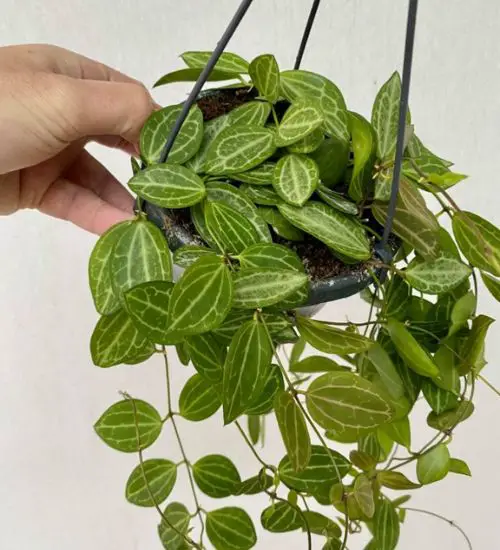Sun: Bright indoor light
Water: Typical water needs for a succulent
Temperature: Zone 9a from 20° F to 25° F (-6.7 ° C to -3.9° C) to Zone 11b from 45° F to 50° F (7.2° C to 10° C)
Winter Survival: Not cold hardy
Propagation: cuttings
Flower: in the Spring or Summer
Flower Type: Yellow
Toxic: Can be toxic to humans and animals
Dormant: winter
Space Requirement: Indoors & Outdoors
Common Problems: Plants may rot if overwatered
Basc Care for Dischidia Ovata
Watering
Watering for Dischidia Ovata is a simple task. It requires Typical water needs for a succulent.
What you need to remember is that this type of succulents needs to be watered for every 2 weeks
Fertilizing
Only feed this succulent during its active growing seasons which means Unknown - Tell us. Use the right fertilizer applied in the right amounts. Applying half-strength balanced fertilizer every month or so is recommended for optimal results.
Do not fertilize during winter as the plant is dormant.
Sun & Location Requirements for "Watermelon Dischidia"
Dischidia Ovata needs lots of sunshine! An ideal spot is near a window that gets direct sun for a few hours every day. If you don’t have natural sunlight indoors, consider investing in an LED grow-light to provide enough light for "Watermelon Dischidia" to stay healthy and vibrant.
As per this succulent profile, it is only able to stay healthy when the environment temperature is above the range of zone 9a from 20° F to 25° F (-6.7 ° C to -3.9° C).
When temperatures drop below freezing, it is important to take precautions to protect Dischidia Ovata from the cold. Insulating and providing adequate drainage for the plant are key elements in helping it survive winter weather. Wind and sun exposure should also be minimized to prevent frost damage.
Any succulents in the group will need a medium space to grow. You can place your pot at your table or window. Since this plant needs more space than mini succulents, you should consider do not plant them together with other succulents/plants.
Dischidia Ovata also benefits from some indirect light throughout the day as well, so make sure you give it enough space to soak up light without becoming too exposed to heat.
Propagation
One way to propagate Dischidia Ovata is by cutting
Toxicity

The toxicity of Dischidia can vary depending on the individual species, but all species are potentially dangerous if ingested. Symptoms of poisoning may include vomiting, abdominal pain, diarrhea and dizziness. If you believe someone has ingested parts of Dischidia Ovata, seek medical help immediately.


